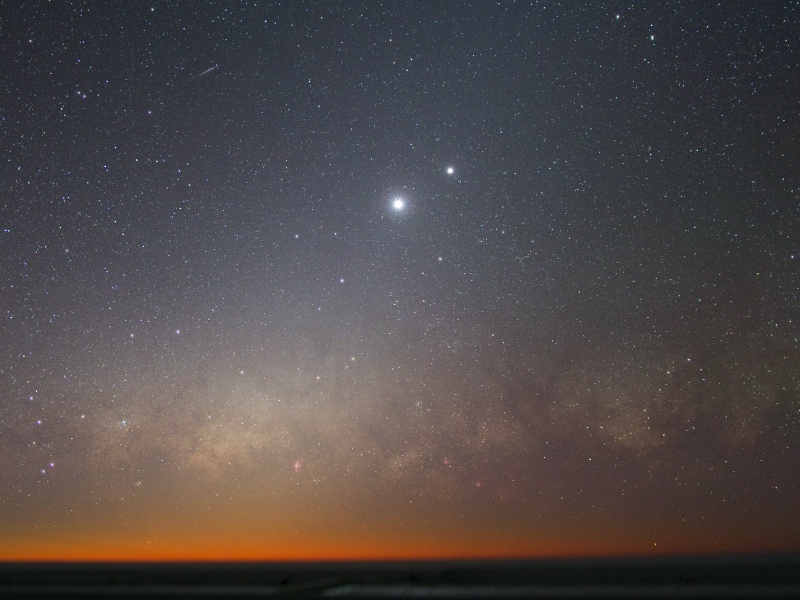Credit & Copyright: Yuri Beletsky
(ESO)
Explanation:
Night skies over Chilean mountain top observatories
can be dark and clear, with
glorious cosmic vistas.
In this recent example, the plane of our Milky Way galaxy stretches
parallel to the horizon,
the galactic center's star clusters,
dark dust clouds, and glowing nebulae hovering in the west.
Recorded after sunset, the wedge of light extending upward
through the scene is Zodiacal light,
sunlight scattered by dust
along the solar system's ecliptic plane.
A faint meteor was also caught in the view, but
approaching a conjunction, brilliant Venus and
bright Jupiter dominate the skyscape.
A close pairing through this weekend, by Monday,
December 1,
they will be joined by the young
crescent Moon.
Look west after sunset and the tight celestial triangle formed by
Moon, Venus, and Jupiter, the three brightest beacons in the night,
will be
a
spectacular sight,
even from bright-sky urban locations all over the world.
1999 2000 2001 2002 2003 2004 2005 2006 2007 2008 2009 2010 2011 2012 2013 2014 2015 2016 2017 2018 2019 2020 2021 2022 2023 2024 2025 |
Yanvar' Fevral' Mart Aprel' Mai Iyun' Iyul' Avgust Sentyabr' Oktyabr' Noyabr' Dekabr' |
NASA Web Site Statements, Warnings, and Disclaimers
NASA Official: Jay Norris. Specific rights apply.
A service of: LHEA at NASA / GSFC
& Michigan Tech. U.
|
Publikacii s klyuchevymi slovami:
conjunction - Jupiter - zodiacal light - nevooruzhennym glazom - nochnoe nebo
Publikacii so slovami: conjunction - Jupiter - zodiacal light - nevooruzhennym glazom - nochnoe nebo | |
Sm. takzhe:
Vse publikacii na tu zhe temu >> | |
